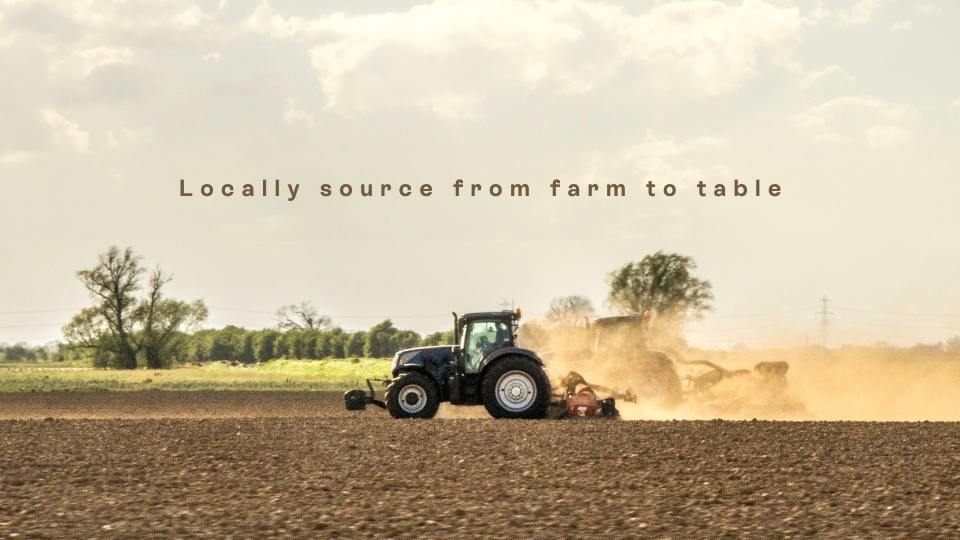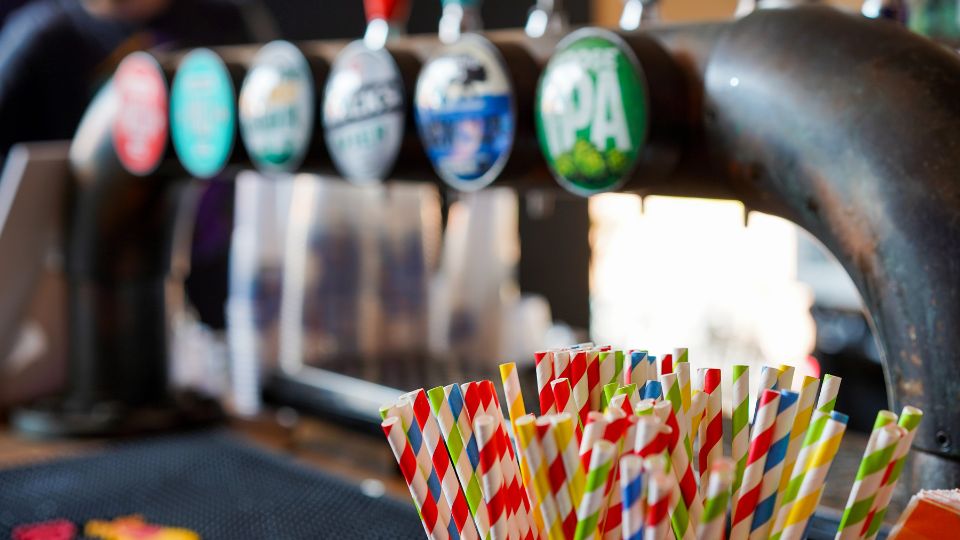
Fighting food waste is an ongoing topic that restaurants are forever trying to tackle.
This guide provides 12 practical tips to help UK restaurants significantly reduce food waste. We’ll explore strategies like smart stock management and creative leftover use, all backed by an easy-to-understand scoring system.
The “Impact, Confidence, Ease” system helps you prioritise solutions based on their potential to reduce waste, the likelihood of success, and the implementation effort required.
Read on to find out how you can ditch the waste and create a recipe for restaurant success!
1. Smart Stock Management
Accurately forecasting ingredient needs based on sales data and seasonal trends is crucial. This reduces the risk of over-ordering, which can lead to spoilage and wasted money. Studies by WRAP show UK businesses lose an estimated £20 billion annually due to food waste. Furthermore, smart purchasing strategies, like negotiating bulk discounts for frequently used staples, can optimize stock management and reduce packaging waste.
For example, a restaurant that analyses its data might discover a surge in burger sales on weekends. They can then adjust their orders to ensure they have enough hamburger patties for the busy period without being left with excess stock during the week. Additionally, negotiating bulk discounts on buns or condiments can reduce overall costs without sacrificing quality.
Impact: High | Confidence: High | Ease: Medium
2. Sourcing Local and Seasonal

Seasonal ingredients are not only fresher and tastier, but often have a longer shelf life due to shorter travel distances. This reduces spoilage and food miles, the distance food travels from farm to table, lowering the restaurant’s carbon footprint. Sourcing locally supports nearby farmers and producers, strengthens the local economy, and allows restaurants to build relationships with suppliers who can offer unique ingredients. This can lead to a more creative and interesting menu for customers.
Building relationships with local suppliers allows restaurants to access unique or specialty ingredients that might not be available through traditional distributors. This can give them a competitive edge and allow them to create a more exciting dining experience for customers. Local sourcing can also foster a sense of community and environmental responsibility, which can resonate with some diners.
Impact: Medium | Confidence: High | Ease: Medium
3. Proper Storage Techniques
Proper storage is essential for food safety and reducing waste. Training staff on the FIFO (First In, First Out) method ensures older ingredients are used first, preventing them from expiring unnoticed in the back of the fridge. Maintaining optimal temperatures in freezers, refrigerators, and dry storage areas is equally important. Different foods require specific temperatures to prolong shelf life and prevent spoilage due to improper cooling or incorrect humidity levels.
Need to dispose of your fridge freezer but not sure how? Read our fridge freezer disposal guide!
Investing in proper storage containers can also significantly reduce food waste. For example, using airtight containers for storing fruits and vegetables can prevent them from drying out or absorbing unwanted odors. Regularly monitoring and adjusting storage temperatures ensures optimal conditions for different food types. This can extend shelf life and reduce the likelihood of spoilage.
Impact: High | Confidence: High | Ease: Medium
4. Clear Labeling Systems
Clear and detailed labeling with product names, purchase dates, and use-by dates prevents confusion and wasted food. Staff can easily identify what needs to be used first, preventing perfectly usable ingredients from being overlooked or forgotten. Standardised labeling systems across the kitchen can further streamline inventory management. Using color-coded labels or abbreviations can quickly indicate use-by dates or storage requirements, ensuring consistency and reducing the risk of human error caused by confusion.
Implementing a color-coded labeling system can be particularly effective. For instance, red labels could signify items approaching their use-by date, prompting staff to prioritise those ingredients. This simple visual cue can significantly reduce the risk of overlooking usable ingredients and contribute to a more streamlined kitchen operation.
Impact: Medium | Confidence: High | Ease: Low
5. Portion Perfection
Reviewing and adjusting portion sizes to be more reasonable can significantly reduce plate waste. Offering smaller plates or sides alongside larger portions allows customers more control over their portion size. This can help them avoid over-ordering and prevent leftover food being discarded.
For example, a restaurant might offer a smaller “lunch portion” of their signature pasta dish alongside the standard size. This caters to customers with lighter appetites and reduces the likelihood of wasted food. Additionally, promoting the option to share plates or offering doggy bags for leftovers can further encourage responsible consumption.
Impact: Medium | Confidence: High | Ease: Medium
6. Menu Magic

Designing a menu that uses common ingredients creatively can reduce waste. Featuring specials based on ingredients that need to be used up first allows the restaurant to showcase their culinary skills while reducing food waste.
A restaurant might, for instance, create a daily “chef’s special” dish using ingredients nearing their use-by date. This allows them to get creative and offer unique menu options to customers, while also cutting food waste. Additionally, focusing on dishes with versatile ingredients allows for greater flexibility in menu planning and reduces the risk of specific items going unused.
Impact: Medium | Confidence: Medium | Ease: Medium
7. Leftover Love
Providing attractive, eco-friendly containers and actively encouraging customers to take leftovers home can significantly reduce food waste. Partnering with local charities such as Fare Share for food donations can also be a great option for surplus edible food.
Offering reusable or compostable takeaway containers allows customers to conveniently take leftover food home without generating additional waste. Additionally, partnering with local charities allows restaurants to donate edible surplus food to those in need, fulfilling a social responsibility while cutting out avoidable waste.
Impact: High | Confidence: Medium | Ease: Low
8. Waste Not, Want Not
Getting creative with leftover ingredients can prevent them from being thrown away. Vegetable scraps can be used to make flavorful stocks, bruised fruit can be turned into jams or compotes, and leftover proteins can be repurposed in salads or sandwiches.
For example, leftover roasted vegetables can be chopped and added to frittatas or quiches. Bread crusts can be used to make breadcrumbs for breading or stuffing. Some restaurants have also begun adding charges for unfinished plates to encourage customers to order only what they can finish in a sitting.
Impact: High | Confidence: High | Ease: Medium
9. Compost Champs
Exploring composting options for food scraps that can’t be used otherwise is a great way to divert waste from landfills. Composting transforms food scraps into nutrient-rich soil amendment that can be used to fertilise gardens or plants.
Many restaurants partner with composting companies who collect food scraps on a regular basis. This allows them to divert a significant amount of waste from landfills and contribute to a more sustainable waste management system.
Using biodegradable food waste bags in your composting efforts ensures that the bags break down along with the food scraps, enhancing the efficiency of waste diversion and supporting a more sustainable composting process.
Impact: High | Confidence: Medium | Ease: Low
10. Train the Team
Educating staff on the importance of reducing food waste empowers them to implement techniques in their daily tasks. Training can cover portion control, proper storage procedures, and creative menu planning to use ingredients effectively.
Involving staff in the process can foster a sense of ownership and responsibility. For example, holding regular team discussions about waste reduction can generate creative ideas and solutions specific to the restaurant’s operation. An empowered and informed team is essential for long-term success in reduce food waste.
Impact: High | Confidence: High | Ease: Medium
11. Track and Analyse

Regularly monitoring food waste helps identify areas for improvement. Analysing sales data can help adjust ordering habits and menu offerings to better align with customer demand.
Restaurants can track food waste by weight or volume, allowing them to quantify the impact of their reduction efforts. This data can then be used to set specific goals and measure progress over time. By tracking and alalysing waste, restaurants can make data-driven decisions to continuously improve their food waste reduction strategies.
Impact: High | Confidence: High | Ease: Medium
12. Continuous Improvement
Making waste reduction an ongoing mission is key to achieving long-term success. Holding regular discussions with staff and customers can gather feedback and help refine existing strategies.
Restaurants can implement feedback mechanisms, like surveys or suggestion boxes, to encourage customer input on portion sizes or menu options. Additionally, staying informed about the latest trends and technologies in food waste reduction can open doors to new and innovative solutions. By fostering a culture of continuous improvement, restaurants can ensure their food waste reduction efforts remain effective and adaptable.
Impact: High | Confidence: Medium | Ease: Low
By implementing these tips and choosing which methods best suit your business based on the “Impact, Confidence, Ease” scoring system, you can create a customised plan to tackle food waste in your restaurant.







